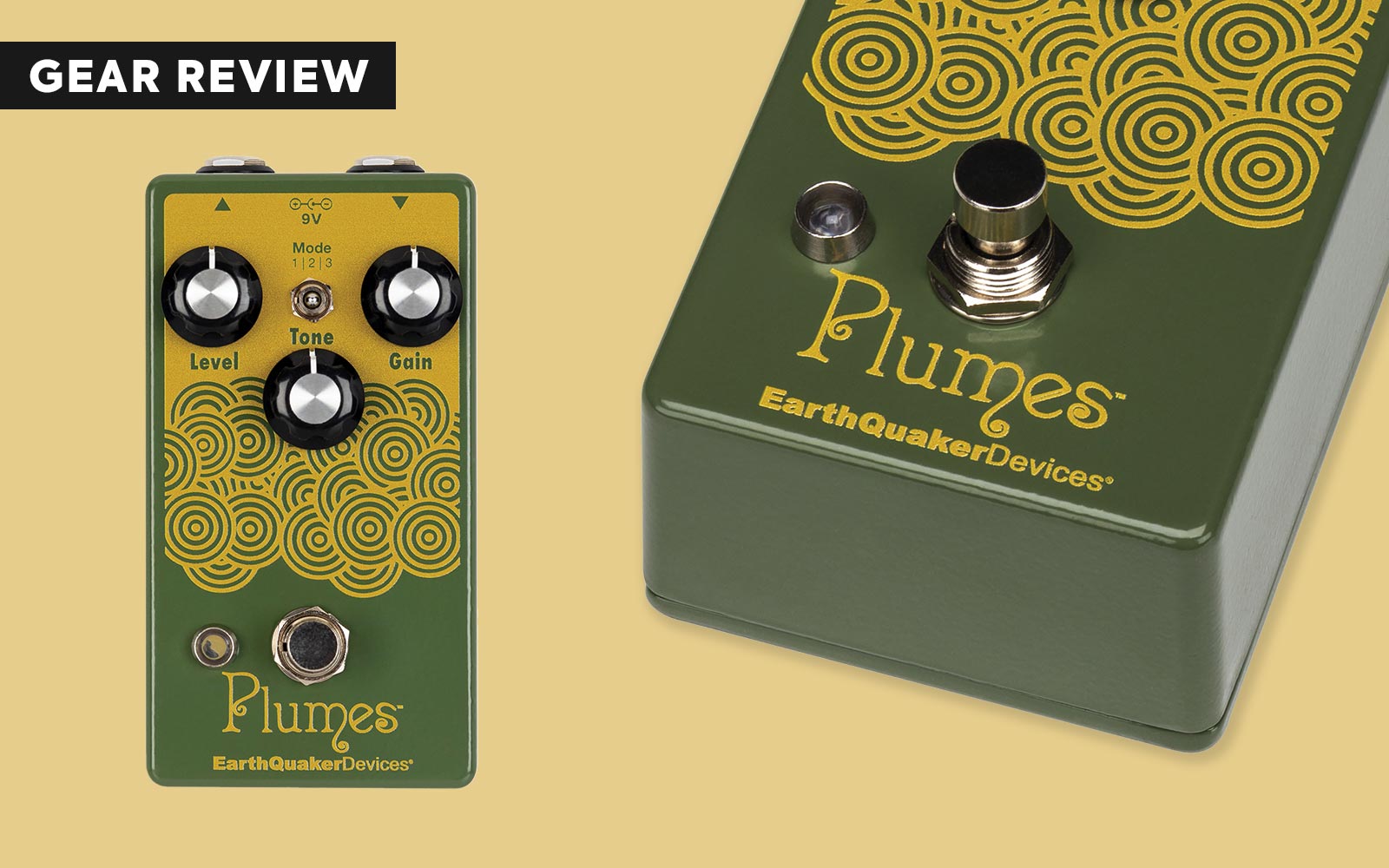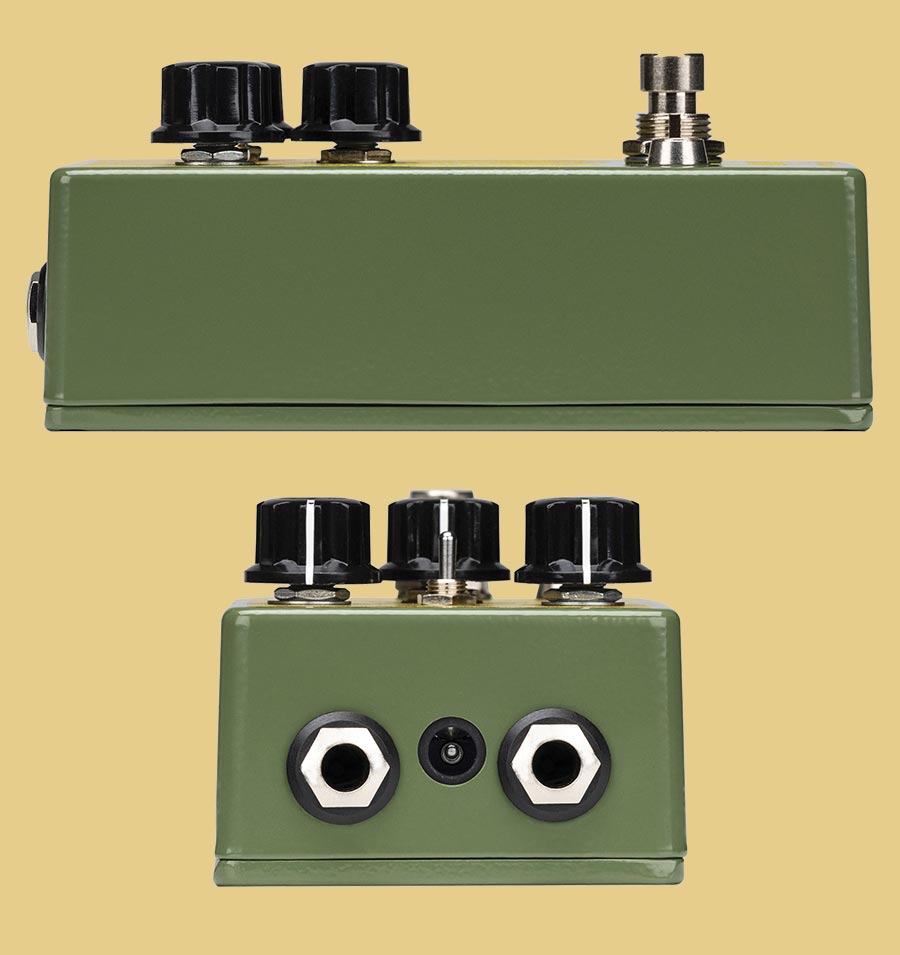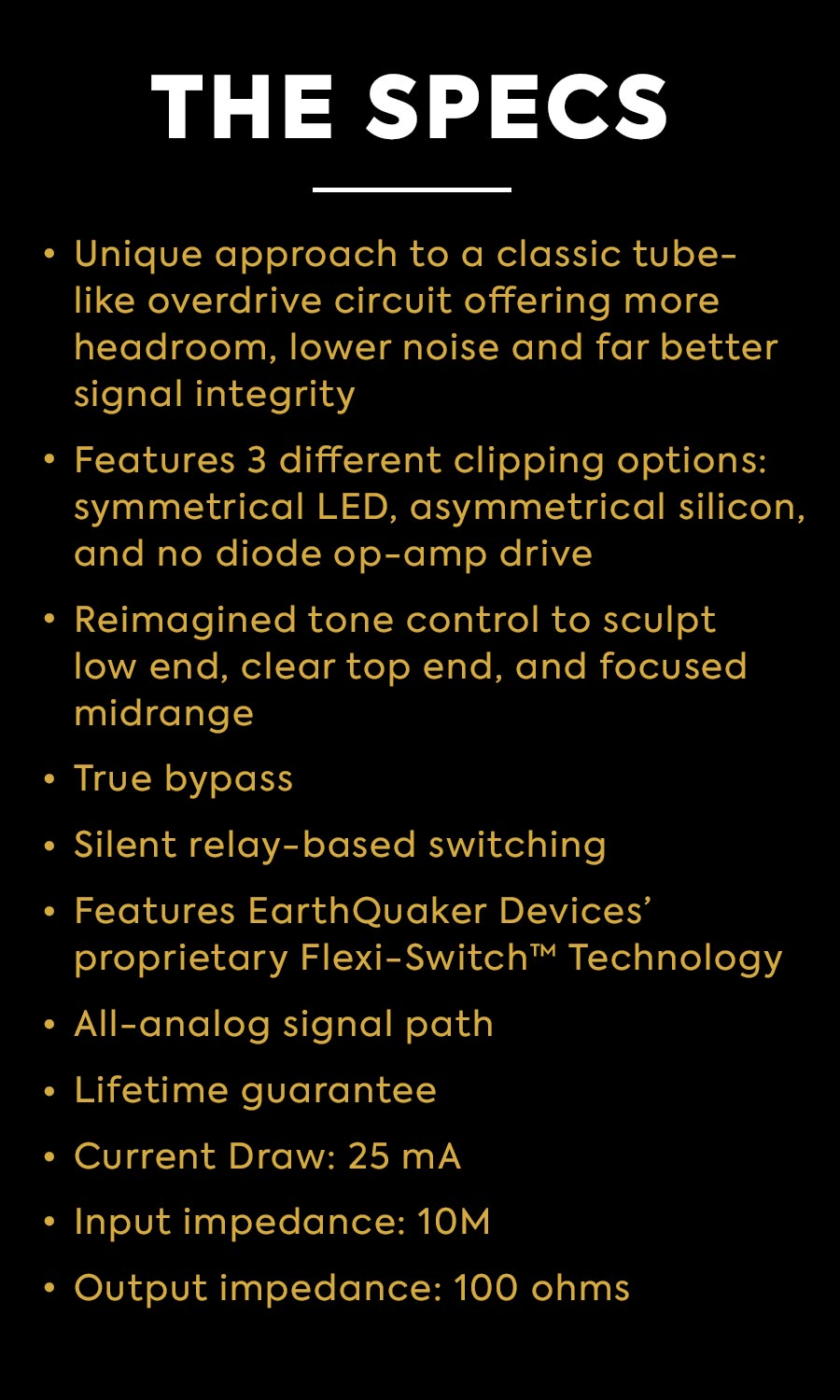
by Tobi Parks
There are some days when you wake up and life is pretty hum drum; then there are days you wake up and get to review the newest Earthquaker Devices pedal. If you’ve read any of my past reviews, you know that I’m a big fan of Earthquaker pedals. Based in Akron, Ohio, Earthquaker has become a leader in the boutique pedal market. Not only do they make amazing pedals that are unique and innovative, but they have unparallelled customer service. Who doesn’t like a pedal with a lifetime guarantee?
 The newest of the Earthquaker pedals is the Plumes Small Signal Shredder. As is characteristic of Earthquaker, they’ve stuffed quite a bit of character into a small and easy-to-use package. The Plumes has traded in the old RC4558 op-amp and the BJT buffers that are standard in distortion pedals, replacing them with low noise JFET op-amps which gives way to amazing clarity without losing any bite. The pedal offers tons of headroom and they’ve raised the input impedance 10 megaohms for a stronger signal. The coolest part about the Plumes is the three-way toggle that allows you to switch between different clipping options making the pedal incredibly dynamic and flexible. Mode 1 is the symmetrical LED and the crunchiest of the Plumes’ settings. It’s meant to mirror a classic valve amp tone when paired with a clean amp. Mode 2 is the asymmetrical silicon clean boost. This mode boosts a clean tone or drives the preamp of an overdriven amp to that breakup sweet spot. Mode 3 is the no diode op-amp drive that is responsible for transparent overdrive tones. This mode is similar in tone to stock tube screamers, but the Plumes adds more output and clarity. The Plumes has a straightforward, three-knob layout with level, gain, and tone. The tone has a wide sweep and allows you to dial in just the right tone to fit your rig.
The newest of the Earthquaker pedals is the Plumes Small Signal Shredder. As is characteristic of Earthquaker, they’ve stuffed quite a bit of character into a small and easy-to-use package. The Plumes has traded in the old RC4558 op-amp and the BJT buffers that are standard in distortion pedals, replacing them with low noise JFET op-amps which gives way to amazing clarity without losing any bite. The pedal offers tons of headroom and they’ve raised the input impedance 10 megaohms for a stronger signal. The coolest part about the Plumes is the three-way toggle that allows you to switch between different clipping options making the pedal incredibly dynamic and flexible. Mode 1 is the symmetrical LED and the crunchiest of the Plumes’ settings. It’s meant to mirror a classic valve amp tone when paired with a clean amp. Mode 2 is the asymmetrical silicon clean boost. This mode boosts a clean tone or drives the preamp of an overdriven amp to that breakup sweet spot. Mode 3 is the no diode op-amp drive that is responsible for transparent overdrive tones. This mode is similar in tone to stock tube screamers, but the Plumes adds more output and clarity. The Plumes has a straightforward, three-knob layout with level, gain, and tone. The tone has a wide sweep and allows you to dial in just the right tone to fit your rig.
 I played the pedal through three different amps (Vox AC 30, Fender Blues Deluxe, and Aguilar 2×12 bass rig) and three different guitars (Gretsch G5420T Electromatic hollow body, Fender Telecaster, and Squire Bass VI) all mixed and matched and I was able to make the pedal work in all configurations quite well. It was pretty hot with the Tele single coils, but I was able to dial it in by turning down the tone control and it sat quite nicely amidst all the clipping options. The pedal sounded amazing on the Gretsch. I was concerned that having a pedal with that much headroom would cause a feedback nightmare, but it really worked well and will likely end up in the pedal chain for that guitar going forward. Though the signal boost and the general sound with the bass VI was great for getting a lower end instrument to cut through, it didn’t hold the low end down as much as I’d like. I discovered that using the pedal in the clean boost position allowed for the bass VI to step out of the mix with clarity and bite in ways that other boost pedals have lacked. I can see using this in my bass rig as a boost for solos or pairing with an existing distortion that allows for more bottom end.
I played the pedal through three different amps (Vox AC 30, Fender Blues Deluxe, and Aguilar 2×12 bass rig) and three different guitars (Gretsch G5420T Electromatic hollow body, Fender Telecaster, and Squire Bass VI) all mixed and matched and I was able to make the pedal work in all configurations quite well. It was pretty hot with the Tele single coils, but I was able to dial it in by turning down the tone control and it sat quite nicely amidst all the clipping options. The pedal sounded amazing on the Gretsch. I was concerned that having a pedal with that much headroom would cause a feedback nightmare, but it really worked well and will likely end up in the pedal chain for that guitar going forward. Though the signal boost and the general sound with the bass VI was great for getting a lower end instrument to cut through, it didn’t hold the low end down as much as I’d like. I discovered that using the pedal in the clean boost position allowed for the bass VI to step out of the mix with clarity and bite in ways that other boost pedals have lacked. I can see using this in my bass rig as a boost for solos or pairing with an existing distortion that allows for more bottom end.
One of my favorite features of the Plumes, and a feature that has become common in many Earthquaker pedals, is the relay-based “soft touch” Flexi-Switch technology that allows for both momentary and latching operation. Being able to just hold the switch down for those momentary bursts – particularly using the boost mode – is very appealing and allows for one less button to press during the inevitable pedal dance that occurs when you have to switch off multiple pedals at a time.
Yet again Earthquaker puts another stellar pedal into the market that is well worth its $99 price point.

